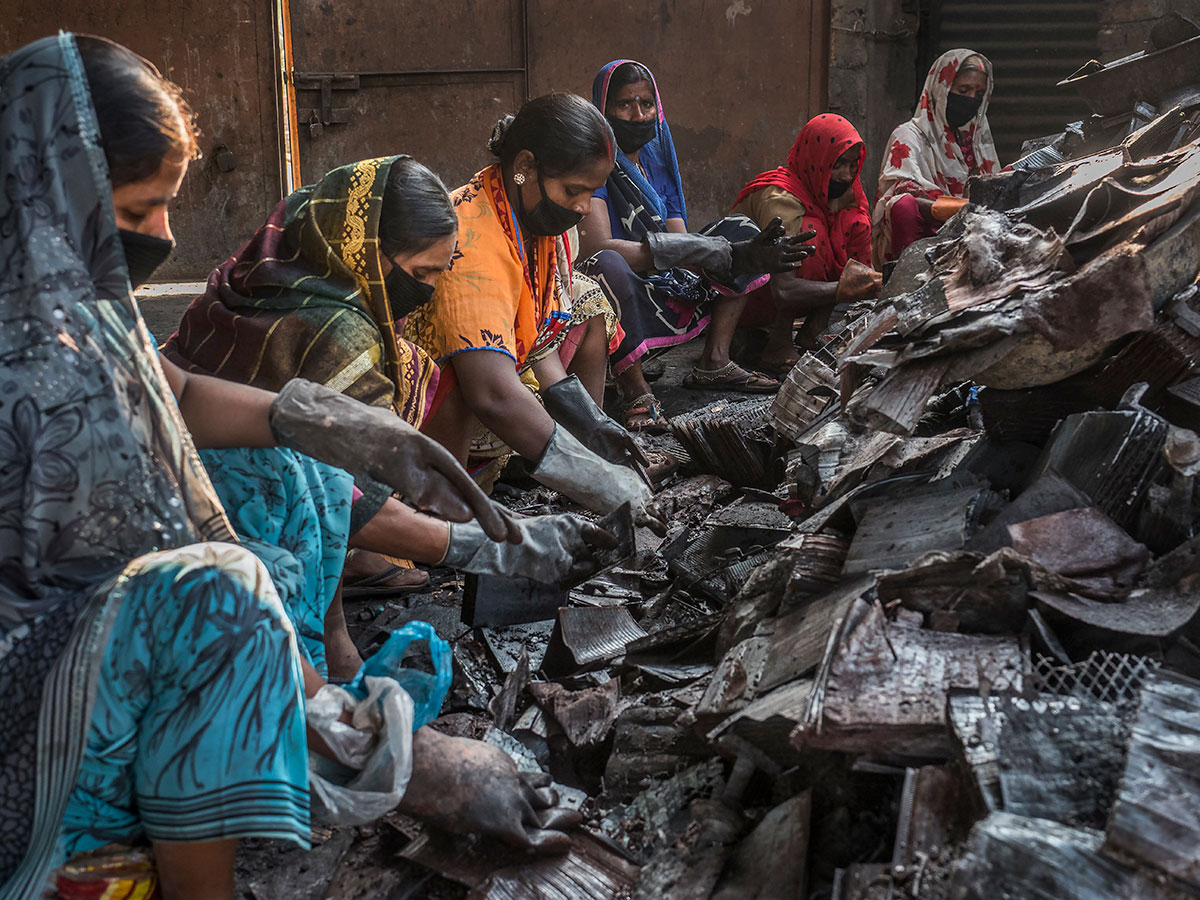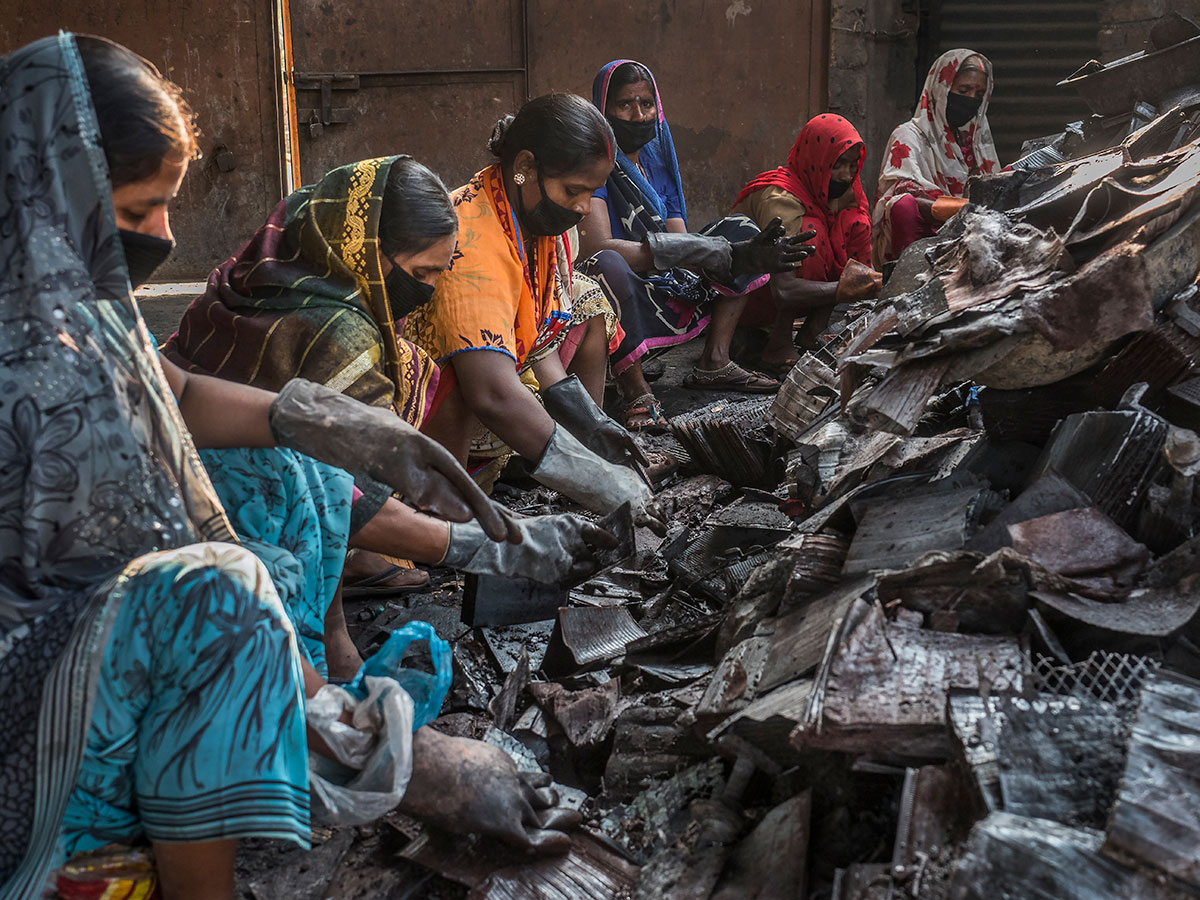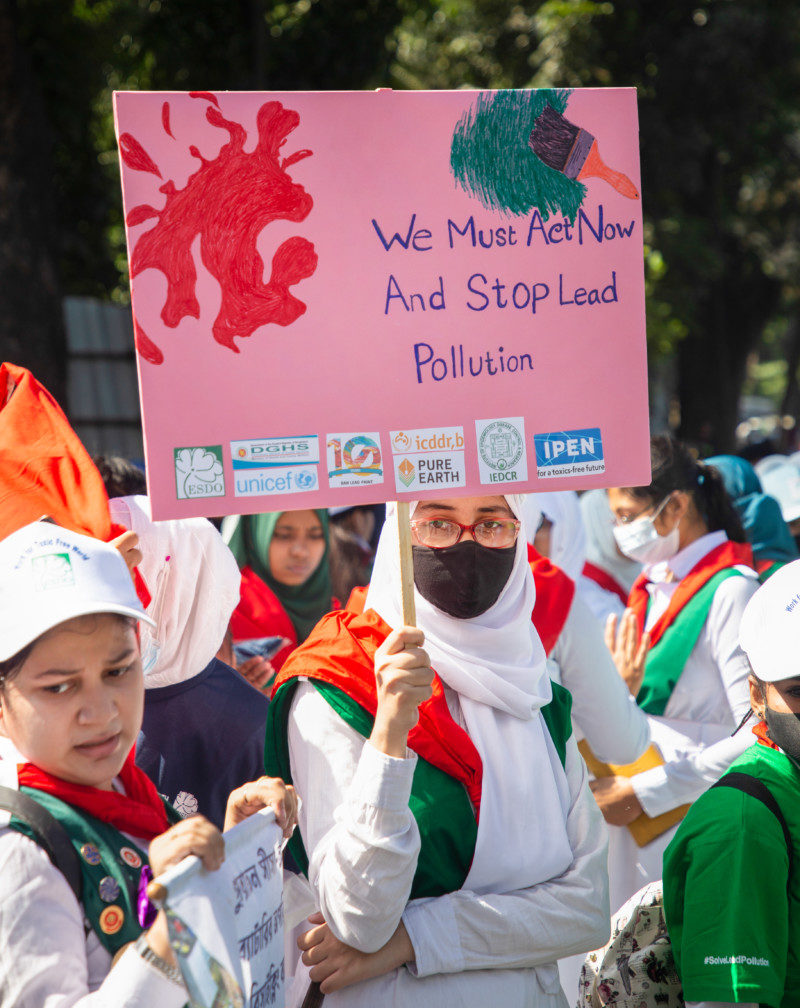Mitigating climate change may have enormous unintended consequences for health: Lead poisoning from more lead-acid batteries.
In 2021, the WHO declared climate change “the biggest health threat facing humanity.”
In recent years, we’ve seen the direct impacts of climate change: record-breaking heat waves around the globe; unprecedented wildfire damage; and catastrophic flooding and rainfall.
From the pool of current environmental health issues, climate change is undoubtedly the headline grabber – and for good reason. However, climate change is deeply entwined with a less visible, yet more imminent, environmental health threat: lead.
Lead Acid Batteries
Approximately 86% of the total global consumption of lead is for the production of lead-acid batteries. Lead-acid batteries are recognized as a reliable and low-cost storage technology to pair with renewable resources, such as wind and solar energy, which have become increasingly critical as the imperative to mitigate climate change escalates. Additionally, lead-acid batteries are an essential part of both gas and electric cars, the latter a focal point of climate policy’s goal to reduce carbon emissions. However, in both gas and electric vehicles, lead-acid batteries require fairly frequent replacing – every 3-5 years in temperate climates, and an even shorter lifespan in LMICs’ hotter climates. As a result, growth in renewable energy sources and technology is directly proportional to the growing demand for lead-acid batteries.
While lead-acid batteries are viewed as an essential tool in adapting to climate change, they also pose a significant risk of lead exposure. Lead-acid batteries contain large amounts of lead, with a standard battery containing over 9 kilograms. Almost all of this lead can be recovered and recycled: in the U.S. and Europe, more than 95% of lead from used lead-acid batteries is recycled. However, in low- and middle-income countries (LMICs), appropriate laws and enforcement mechanisms are lacking and a significant percentage of lead-acid batteries are recycled through informal or poorly-regulated operations that release considerable lead pollution, poisoning surrounding communities. Currently, in LMICs more than 70 percent of lead-acid batteries are recycled poorly. As their use grows, as the transition to renewable energy continues, we can expect even more lead poisoning. Unless we act.
Exposure to such toxic sites has repeatedly caused acute lead poisoning in local children. Until all communities can safely manage and recycle lead-acid batteries, a reliance on this technology in the face of climate change will increase risks of lead poisoning across LMICs, exacerbating existing health and development disparities.
Lead-acid batteries are used in new smaller electric vehicles, such as three-wheelers, and even some small four-wheel cars. They are cheaper than lithium-ion batteries, but even more importantly, can be recycled and remanufactured in small towns and villages around the world. Lithium batteries cannot – they require extensive investment for recycling. As well, they are used to store power in rural areas, often as a part of solar systems. Because of these two uses, the use of lead-acid batteries is projected to grow substantially as the world moves to renewables.
Unless the management of lead-acid batteries is enhanced in LMICs, the unintended consequences of even more lead poisoning will be enormous.
Why Worry About Lead?
The adverse health effects from lead exposure are well documented and begin at the lowest levels of exposure yet measured. A cumulative toxicant, lead impacts multiple body systems, including neurological, cardiovascular, gastrointestinal, hematological, and renal systems. On a grander scale, 5.5 million premature deaths are attributed to lead exposure annually, with a social cost of $6 trillion.
Children are particularly vulnerable due to their size, higher rate of lead absorption, and hand-to-mouth behavior. An estimated 1 in 3 children is poisoned by lead, as many as 800 million globally. The permanent brain damage that childhood lead poisoning can cause often results in reduced IQ, behavioral problems, and learning difficulties. In adults, lead causes cardiovascular and kidney disease, pregnancy complications, and an increased tendency for violence.
Lead exposure most commonly occurs through the ingestion of lead from sources such as contaminated foods and spices, ceramic and metal cookware, lead-based paint, traditional medicines, cosmetics and cultural powders, children’s toys, and lead pipes, as well as from unsound industrial operations such as lead smelting and lead-acid battery recycling.
Other issues related to climate are also important within the lead agenda.
Warmer Climates Intensify Lead Poisoning
Levels of lead in children’s blood peak during the warmest months of the year, late summer and early fall. This rise in lead exposure is significant and apparent across multiple populations, locations, and time periods.
In 2014, the CDC found that during the warmest months (August-October), 36% of new lead poisoning cases were identified, more than any other consecutive three-month period. This seasonal trend is influenced by a few conditions: high temperatures, low soil moisture, and an increase inlead’s bioavailability. Human behavior is also impacted by warmer weather, with home windows often left open, and children spending more time in and around the home and outdoor spaces.
The International Panel on Climate Change predicts that global warming is likely to reach 1.5°C between 2030 and 2052. At 1.5°C warming, about 14% of the global population—over 1.1 billion people—will be exposed to severe heat waves at least once every five years, with urban heat islandsamplifying the effects. These changes will extend the warm season, and in turn, increase seasonal risk of lead exposure.
Human Behavior: Migration, Consumer Goods, and Violence
Lead poisoning disproportionately impacts refugees and international migrants due to their frequent occupation of older homes containing lead-based paint, living near or working in lead-using industries (mines, smelters, battery recycling), and their disproportionate use of lead-contaminated consumer goods.
Consumer products are increasingly recognized as sources of lead exposure, both within the U.S. and globally, with products including cookware, spices, cosmetics and cultural powders, toys, jewelry, and traditional medicine showing disturbing rates of contamination. A 2023 study by Pure Earth surveyed 5,000 consumer products purchased in 25 countries. Across the samples, 52% of metal foodware and 45% of ceramic foodware, 13% of toys, and 12% of cosmetics were found to have high levels of lead. These consumer goods pose a particular risk of lead exposure as they can be hand-carried across borders, impacting not just their communities of origin, but those to which individuals immigrate as well.
In a warming world, climate migration is inevitable. The World Bank projects 216 million international climate migrants by 2050, largely from LMICs. The countries faced with impending migration are also those with the greatest concentrations of lead in consumer goods, which will migrate with these individuals to their new communities.
In addition to forced migration, a warming climate is a catalyst for another human behavior: violence. A growing body of research suggests that rising temperatures increase some violent crimes, including homicides, sex offenses, and assaults. The heat-crime relationship is notably stronger in low-income communities, both within the U.S. and in LMICs. Lead poisoning compounds this growing risk, as lead exposure has been found to have a causal relationship with violence. As lead remains unremediated across vulnerable communities, the risk of violence in a warming world poses cause for concern for policymakers.




